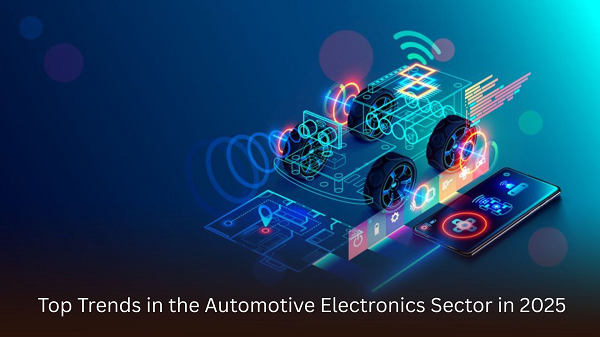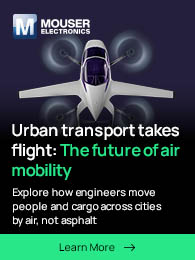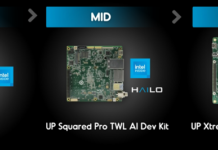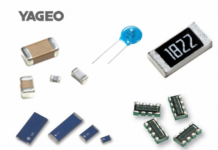Imagine stepping into a vehicle that not only drives itself but also connects seamlessly with the world around it, all while minimizing environmental impact. In 2025, the automotive electronics sector is transforming how we think about mobility. From electric vehicles dominating roads to advanced systems ensuring safety and efficiency, these innovations are reshaping the industry. This blog explores the key trends driving this evolution, highlighting technologies that promise a smarter, greener future.
The Electrification Revolution
One of the most prominent trends in 2025 is the rapid shift toward electrification. As global initiatives push for cleaner energy, electric vehicles are becoming mainstream. This change relies heavily on advanced electronics like battery management systems that monitor health and optimize performance. Inverters and converters ensure efficient power usage, while electric drive units power motors effectively.
Power electronics play a crucial role here, using wide-bandgap semiconductors and advanced algorithms to improve charging efficiency and extend battery life. Wireless charging solutions are also gaining traction, allowing vehicles to charge without cables through electric field coupling. In regions like India, the production of electric vehicles has surged, increasing the need for these components. The electronic content in EVs is expected to rise significantly compared to traditional vehicles, with power devices like insulated gate bipolar transistors and MOSFETs in high demand.
This trend supports reduced carbon emissions and better vehicle design. By 2025, these advancements are set to make EVs more accessible and reliable, paving the way for widespread adoption. According to the latest research study by DataM Intelligence the automotive electronics market was valued at US$ 273.19 billion in 2024 and is projected to double, reaching US$ 548.36 billion by 2032, at a notable CAGR of 9.10%.
Boosting Connectivity in Vehicles
Connectivity is another game-changer in 2025. Vehicles are evolving into part of the Internet of Vehicles, enabling seamless communication with other cars, infrastructure, and devices. This includes vehicle-to-everything technology that improves traffic management and safety.
Key components like connectivity modules support 5G and in-vehicle Wi-Fi for high-speed data transfer. Telematics systems provide real-time vehicle data, while infotainment setups enhance in-car experiences. The global market for machine-to-machine cellular modules is projected to grow substantially, reflecting the demand for these features.
In 2025, connected cars are expected to make up a large portion of passenger vehicles. This connectivity allows for remote control and personalized services, making driving more convenient. However, it also underscores the need for robust systems to handle the increasing data flow.
Advancing Autonomous Driving Technologies
Autonomous driving is accelerating in 2025, with electronics enabling safer, more efficient roads. Advanced driver assistance systems, such as adaptive cruise control and automated emergency braking, rely on sophisticated sensors and processors.
Technologies like LiDAR, radar, and computer vision processors detect objects and make real-time decisions. AI-powered systems process data to reduce human error, supporting features like lane departure warnings and parking assist. Sensor chips capture environmental data, including hyperspectral imaging for better monitoring.
The push toward higher levels of autonomy is driving investments in these areas. In 2025, these innovations are expected to become more integrated, making self-driving vehicles a closer reality and enhancing overall road safety.
Strengthening Automotive Cybersecurity
With vehicles becoming more connected, cybersecurity emerges as a critical trend in 2025. Protecting against cyber threats is essential to maintain data integrity and vehicle safety.
Solutions include encryption protocols, intrusion detection systems, and secure over-the-air updates. These measures safeguard communication and prevent unauthorized access. The automotive cybersecurity market is anticipated to expand significantly, as incidents targeting mobility assets rise.
AI-powered tools for risk management and automated testing for electronic control units are becoming standard. This focus ensures that as vehicles digitize, they remain secure, building trust in connected technologies.
Integrating AI and Machine Learning
AI and machine learning are deeply embedded in automotive electronics by 2025. These technologies enhance vehicle performance, from predictive maintenance that forecasts issues to personalized experiences like adaptive climate control.
AI optimizes routes through traffic management and supports edge computing for faster decisions. In manufacturing, AI drives efficiency with automation and data analytics under Industry 4.0 principles.
System on chip designs consolidate functions, incorporating AI for compact, powerful setups. This integration is key to smart mobility, making vehicles more intuitive and efficient.
Innovations in Sensors and Vehicle Interfaces
Sensors and interfaces are evolving to improve user interaction and vehicle capabilities in 2025. Sensor chips provide real-time data for safety features, while novel interfaces like touchscreens, gesture recognition, and augmented reality heads-up displays minimize distractions.
Voice assistants and predictive features offer intuitive control. The sensor chip market is poised for growth, driven by demands for multi-sensor packages.
These advancements create personalized user profiles and enhance the driving experience. By integrating with other systems, they contribute to safer and more engaging vehicles.
Here are some crucial innovations in this area:
– Full-spectrum imaging for detailed environmental analysis.
– Low-power voice control chips for hands-free operation.
– AR displays with multi-layer depth for better visibility.
Embracing Sustainability and Thermal Management
Sustainability is a core trend in 2025, with electronics focusing on eco-friendly practices. Recyclable materials, low-power designs, and energy harvesting systems like regenerative braking reduce environmental impact.
Thermal management systems maintain optimal temperatures for components, especially in electrified vehicles. Liquid cooling, heat pipes, and intelligent algorithms prevent overheating, extending component life.
The automotive thermal management market is expected to grow, reflecting the importance of these systems. Energy-efficient electronics align with emission regulations, supporting green innovation across the sector.
Advancements in Manufacturing and Localization
Manufacturing innovations are transforming how automotive electronics are produced in 2025. Robotic systems ensure precision, with collaborative robots and AI vision for flexible lines.
In regions like India, the electronics manufacturing services sector is booming, driven by government incentives and a shift to original design manufacturing. This includes end-to-end solutions and localization efforts to reduce import dependency.
The printed circuit board assembly market is growing rapidly, supporting high-margin automotive segments. Initiatives for semiconductor production are fostering local ecosystems, enhancing supply chains.
Conclusion
In 2025, the automotive electronics sector is at the forefront of innovation, driven by electrification, connectivity, autonomy, and sustainability. These trends not only enhance vehicle performance and safety but also align with global goals for cleaner, smarter mobility. As technologies like AI, advanced sensors, and robust cybersecurity integrate further, the future of driving looks promising. Staying ahead of these developments will be key for industry players and consumers alike, ensuring a seamless transition to the next era of automotive excellence.


















